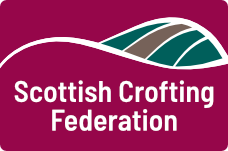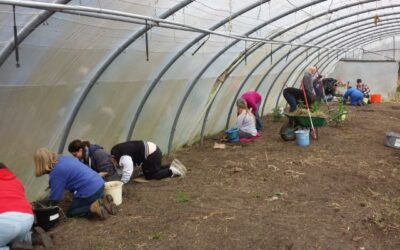Charecteristics
- Smallholding.
- Care croft was to be primary income.
- Lots of planning over model.
- Sttruggled to establish.
- Low population density.
- Contracts are not forthcoming.
This case study is a smallholding on which the social croft was planned to be the primary source of income. After considering a range of options and drawing up a detailed plan, the croft opened in November 2017.
The social crofter did not have a farming background, but did have a lot of experience with gardening and doing voluntary work on farms through the ‘WWOOF’ scheme, and had attended training courses run by Scottish Crofting Federation and SAC Consulting after taking on the croft in 2015. She had also done formal studies in ‘forest therapy’ and the wider evidence base for the therapeutic benefits to mental and physical health of nature and outdoor activity.
The social croft was primarily focused on providing services to teenage and adult clients with learning disabilities and autism, and also took clients with ADHD, behavioural issues and mental health issues like anxiety. The social crofter’s professional background was as an occupational therapist, and she had many years’ experience working with these clinical conditions.
The intention was to use the farm as an educational and therapeutic space where outdoor activities could be adapted to suit the individual abilities of each service user so that they could participate in activities and work on their therapeutic or educational goals.
‘I looked for too long at legal structures in the early stages. I wanted to set up the service as a social enterprise, but that’s difficult when you own the farm. The asset lock that comes with the social enterprise legal structure means that operating on land that you own personally is difficult. As a social enterprise, if the business were to fail, the assets – including the land – are supposed to be transferred to another social enterprise – so you risk losing the land. And there is a potential conflict of interest that funders are wary of. I got legal and business advice, and was advised that my options were to either ‘gift’ the land to the social enterprise (and so risk losing it), or run the service on someone else’s land so there’d be no conflict of interest. Neither was a good option.’
The next steps were to prepare a proper business plan which was submitted to the Chamber of Commerce, and a Start Up grant was awarded. Other time-consuming work in the set-up phase included:
- Applying for planning permissions and change of use for areas of the farm.
- Risk assessments
- Insurance arrangements
- Applying for PVGs
- Getting up to speed on the legal responsibilities of running a business and gaining business skills by attending Business Gateway courses.
In all, a lot of time and money went into the set up. Did get great support from a start up grant from Social Farms and Gardens, which involved a day spent on an established social croft and mentoring from an experienced social crofter. The Care Farming Network was also a useful resource.
Over time, the social crofter developed a loose programme of therapeutic and educational activities that could be tailored to the needs of the service users. There was a range of outdoor activities, involving both animals and plants. Most people who came engaged really well with the animals, especially the pigs. There were also indoor activities in the polytunnel for bad weather.
Despite the social crofter’s background in health, and despite a lot of interest from people with disabilities and their families, support from front-line staff, and meetings at a higher strategic level in Health & Social Care, the pathway for placement referrals and bookings did not work out. ‘When it came to it, we never got the ‘okay’ that would have allowed for Self-Directed Support budgets to be spent on our service – which was one of the key funding streams we were looking at. We were asked to come back if we could make it ‘cost neutral’ for the NHS, which for us was an unrealistic ask.’
Although the bookings were steady, they were not enough to reliably sustain the business long term and the service has since closed down.
This social crofter would advise caution to anyone who is thinking of going for this kind of model of social crofting.
The idea that such a service can be cost neutral is difficult. It is possible that it would be ‘cost neutral’ if you consider the improvement in health and wellbeing that comes with a placement against prescription costs and reduction in demand on other services – but that would take a full research study to establish and isn’t within the reach of individual crofters. This type of service will always have running costs that need to be covered, and they aren’t cheap…..




